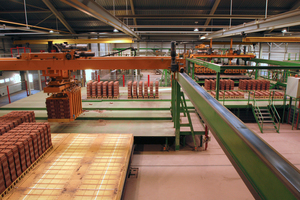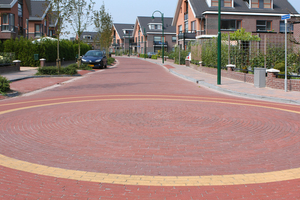High demand for Dutch building ceramics in 2021
The year 2021 was a strong year for the Dutch brick and tile industry. This is shown by the annual report of the Dutch trade association Koninklijke Nederlandse Bouwkeramiek (KNB), which was published in the summer of 2022. Domestic and foreign demand for ceramic building products has increased significantly. In contrast, KNB is cautious about the outlook for the current year. The high demand for dwellings to be built and the high number of upcoming renovations are contrasted by uncertainty about the further development of energy prices, the availability of gas and the development of demand.
Construction industry
The number of new building permits issued rose by 10 percent to the highest level in 10 years (74,000). According to figures from Buildsight, a Dutch market research institute for the construction industry, the number of completions remained virtually the same as in 2020, at 67,300 new houses. According to research by the EIB, a sectoral economic research institute for construction and housing, overall production in the construction sector remained stable throughout the two-year pandemic period, but the labour market situation tightened sharply.
Masonry Bricks
For the first time since 2018, sales of masonry bricks increased in 2021, by nine per cent. In contrast to an almost unchanged number of building completions, domestic sales of Dutch masonry bricks fell by 2 percent. This decline was measured in Waalformaat (WF), so it is not clear what the actual development was in terms of square metres of masonry. The Waalformaat is the standard unit of calculation for brick sizes in the Netherlands, with dimensions of 210 x 100 x 50 mm.
Sales to the UK gained significant momentum (up 44 percent). The influence of pent-up demand may have played a role here after exports were massively overshadowed by Brexit in 2020.
Pavers and ceramic roof tiles
In 2021, demand for pavers remained unbroken in both the public and private markets. According to KNB, the building material has a very good image and is equated with quality, durability, sustainability and aesthetics and is often chosen to „enhance“ the surroundings.
The demand for clay roof tiles exceeded the supply. According to KNB, the reason for this is the high demand in the renovation market, driven by the goal of improving the energy efficiency of houses. As there is still much to be done in this area, the market for ceramic roof tiles is therefore likely to remain strong in the longer term.
Forecasts
Despite concerns about staff shortages in industry and construction, rising (energy) prices and rising inflation, 2022 started on a positive note. Relief was provided by the fact that the COVID pandemic was on the wane, the new government‘s plans to build 100,000 new homes a year by 2030, and an increasingly attractive renovation market thanks to a trend towards maintaining existing properties. All in all, a positive outlook for sales of building ceramics. This still relatively good outlook changed drastically with the Russian invasion of Ukraine at the end of February.
At the time of publication of the KNB Annual Report, the consequences for construction and the industry were not yet foreseeable. Extremely high and fluctuating energy prices, the risk of gas supply disruption and a possible collapse in demand make any forecast very uncertain. At the end of the report, the KNB emphasises that the so-called national construction task can only be fulfilled with a brick industry that is capable of production and delivery.






